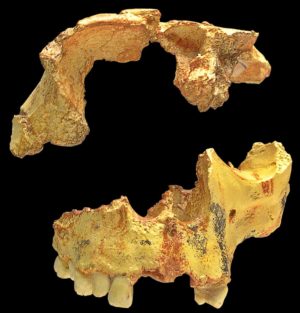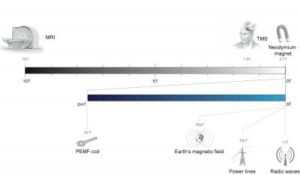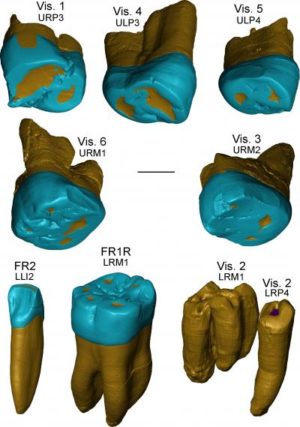
PLOS ONE—Some of the dental features characteristic of Neanderthals were already present in Early Pleistocene Homo antecessor, according to a study* published September 19, 2018 in the open-access journal PLOS ONE by Laura Martín-Francés of the University of Bordeaux, France and colleagues.
Dental tissue proportions and enamel thickness are helpful features for identifying and distinguishing ancient hominins, reflecting unique developmental processes that arose in among hominin species. Neanderthals possess uniquely thin enamel compared to other hominins, but the origin and evolution of this condition is unknown. In this study, Martín-Francés and colleagues examined teeth from the Early Pleistocene hominin Homo antecessor, a potential ancestor of Neanderthals, to determine when this and other Neanderthal tooth features arose.
The authors examined 17 molars of Homo antecessor from the Gran Dolina-TD6 cave site in Sierra de Atapuerca in Northern Spain, dating back to the Early Pleistocene, 0.8-0.9 million years ago. They compared these teeth to more than 300 molars from other Homo species, living and extinct, from Asia, Africa, and Europe. Through micro-CT scans and high-resolution imaging, they determined that H. antecessor did not share the Neanderthal trait of thin enamel, but that the overall distribution of tooth tissues (enamel and dentine) in H. antecessor was in fact more similar to Neanderthals than to Homo sapiens and other hominins.
These findings suggest that certain aspects of Neanderthal tooth structure had already arisen in earlier hominins of Early Pleistocene Europe, but that the full suite of Neanderthal traits did not appear until later. The authors note that future study on hominins across the Early and Middle Pleistocene of Europe will further elucidate the evolutionary steps that produced the unique dentitions of Late Pleistocene hominins.
Martín-Francés summarizes: “The Early Pleistocene species, Homo antecessor (Atapuerca, Spain) shares the same molar enamel thickness with most hominins, including Homo sapiens. However, as early as 900,000 ago, Homo antecessor shows a few structural characteristics that are absent in the rest of the hominin species and will become the typical Neanderthal configuration.”
_______________________________

These are enamel thickness cartographies of the H. antecessor upper M1 (ATD6-103) from Gran Dolina (Atapuerca) compared with those of Neanderthal and modern human. Martín-Francés et al., 2018
_______________________________

Homo antecessor, incomplete skull from “Gran Dolina” (ATD6-15 & ATD6-69), in Atapuerca, Spain (replica).
_______________________________
In another study**, fossil teeth from Italy, among the oldest human remains on the Italian Peninsula, show that Neanderthal dental features had evolved by around 450,000 years ago, according to the article published October 3, 2018 in the open-access journal PLOS ONE by Clément Zanolli of the Université Toulouse III Paul Sabatier in France and colleagues. These teeth also add to a growing picture of a period of complex human evolution that we are only beginning to understand.
Zanolli and colleagues examined dental remains from the sites of Fontana Fanuccio, located 50km southeast of Rome, and Visogliano, located 18km northwest of Trieste. At around 450,000 years old, these teeth join a very short list of fossil human remains from Middle Pleistocene Europe. Using micro-CT scanning and detailed morphological analyses, the authors examined the shape and arrangement of tooth tissues and compared them with teeth of other human species. They found that the teeth of both sites share similarities with Neanderthals and are distinct from modern humans.
There has been much debate over the identities and relationships of Middle Pleistocene ancient humans in Eurasia. The discovery of Neanderthal-like teeth so early in the record adds support to the suggestion of an early divergence of the Neanderthal lineage from our own, around the Early-Middle Pleistocene transition. The teeth are also notably different from other teeth known from this time in Eurasia, suggesting that there may have been multiple human lineages populating the region at this time, adding to a growing list of evidence that the Middle Pleistocene was a time of more complex human evolution than previously recognized.
Zanolli adds: “The remains from Fontana Ranuccio and Visogliano represent among the oldest human fossil remains testifying to a peopling phase of the Italian Peninsula. Our analyses of the tooth internal structural organization reveal a Neanderthal-like signature, also resembling the condition shown by the contemporary assemblage from Atapuerca Sima de los Huesos, indicating that an overall Neanderthal morphological dental template was preconfigured in Western Europe at least 430 to 450 ka ago.”
__________________________________

A virtual rendering of the Visogliano and Fontana Ranuccio teeth. Zanolli et al., 2018
__________________________________
Articles Source: PLOS ONE news releases
*Martín-Francés L, Martinón-Torres M, Martínez de Pinillos M, García-Campos C, Modesto-Mata M, Zanolli C, et al. (2018) Tooth crown tissue proportions and enamel thickness in Early Pleistocene Homo antecessor molars (Atapuerca, Spain). PLoS ONE 13(10): e0203334. https:/
**Zanolli C, Martinón-Torres M, Bernardini F, Boschian G, Coppa A, Dreossi D, et al. (2018) The Middle Pleistocene (MIS 12) human dental remains from Fontana Ranuccio (Latium) and Visogliano (Friuli-Venezia Giulia), Italy. A comparative high resolution endostructural assessment. PLoS ONE 13(10): e0189773. https:/



